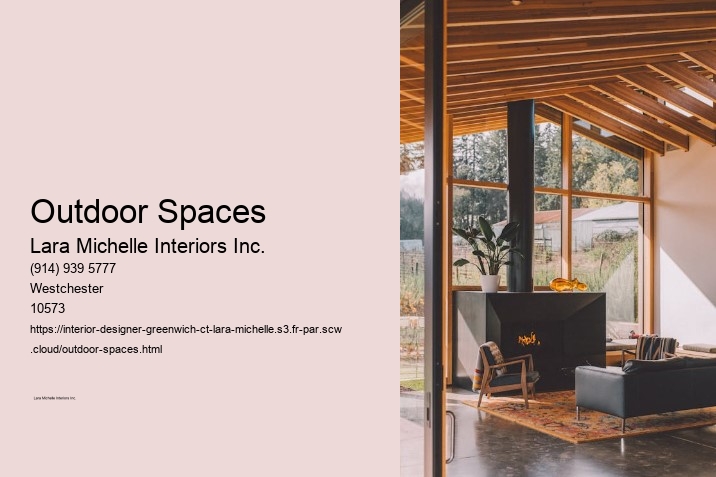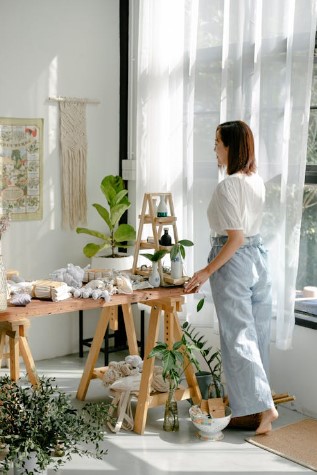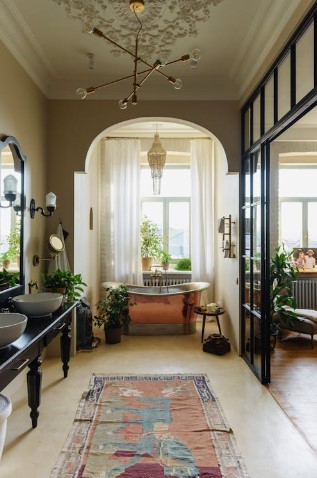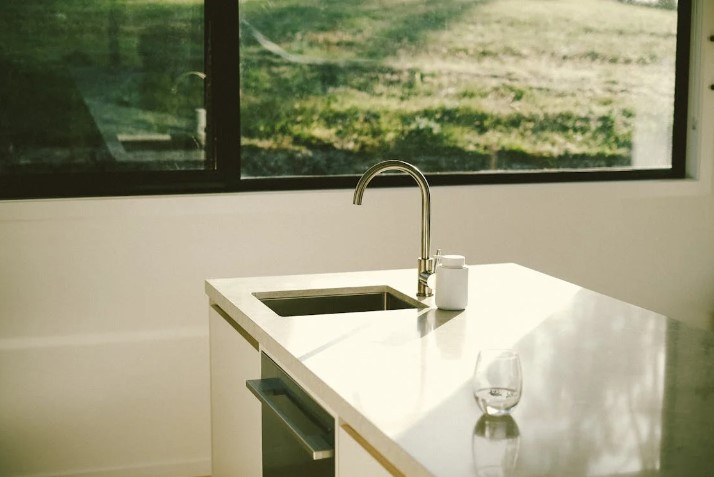

Bringing Nature Indoors
Biophilic design, which emphasizes the connection between humans and nature, is gaining popularity. Incorporating natural elements like wood, stone, and water features can make your home feel more grounded and serene.
Greenery and Natural Light
Adding plants is an easy way to embrace biophilic design. Not only do they purify the air, but they also add a touch of nature to your decor. Maximizing natural light with large windows and skylights further enhances this connection.
Smart Home Integration
Advanced Technology
Technology continues to revolutionize home design. In 2024, smart home systems that control lighting, temperature, and security with a touch of a button are becoming standard. These systems offer convenience and efficiency, making your home smarter and more comfortable.
Convenience and Efficiency
Smart appliances, like refrigerators that can order groceries or ovens you can control with your phone, are also trending. Read about the best Interior Designer Outdoor Spaces in Greenwich CT. These innovations save time and make everyday tasks easier, giving you more time to enjoy your beautifully designed home.
Multifunctional Spaces
Flexible Layouts
As our lives become more dynamic, so do our living spaces. Multifunctional rooms that can adapt to various needs are essential. Think of a home office that doubles as a guest room or a dining area that transforms into a workspace.
Adaptive Furniture
Adaptive furniture plays a big role in creating multifunctional spaces. Modular sofas, extendable tables, and fold-away beds allow you to reconfigure your space as needed, providing flexibility without sacrificing style.
Vintage and Retro Revival
Nostalgic Elements
There's something comforting about the past, and 2024 sees a revival of vintage and retro styles. Mid-century modern furniture, retro color palettes, and nostalgic decor pieces bring a sense of history and character to your home.
Mixing Old and New
The key to nailing this trend is balance. Mixing old and new elements creates a curated, timeless look. Pair a vintage armchair with a contemporary sofa or use retro wallpaper in a modern kitchen for a unique and harmonious design.
Artisan and Handcrafted Decor
Unique Pieces
In a world of mass production, handcrafted items stand out. Artisan decor, from handwoven rugs to bespoke furniture, adds a personal touch to your home. These unique pieces often come with a story, making them more than just decor.
Supporting Local Artists
Supporting local artists and craftsmen not only enriches your home's aesthetic but also supports the community.
Conclusion
As we look ahead to 2024, interior design trends reflect a blend of sustainability, functionality, and bold expression.
10 Tips for a Successful Home Renovation
Planning Your Home Renovation
Renovating your home can be an exciting yet daunting task. The first step in ensuring success is meticulous planning.
Setting Realistic Goals
It's crucial to set realistic goals. Think about what you want to achieve and prioritize those needs over wants. Whether it’s a kitchen makeover or a full-scale remodel, clarity in your objectives will guide the entire process.
Creating a Budget
Creating a budget is another fundamental aspect of planning. Determine how much you are willing to spend and stick to it. This includes not only the cost of materials and labor but also a buffer for unexpected expenses.
Hiring the Right Professionals
The success of your home renovation heavily depends on the professionals you hire.
Research and Recommendations
Start by researching potential contractors and asking for recommendations from friends and family. Look for reviews and testimonials online to gauge their reliability.
Checking Credentials
Ensure that the professionals you consider are licensed and insured. This step protects you from any liabilities and ensures the quality of work.
Designing Your Space
A well-thought-out design is essential for a successful renovation.
Finding Inspiration
Gather ideas from magazines, websites, and social media. Create a mood board to visualize your dream space.
Balancing Function and Aesthetics
While it’s easy to get carried away with aesthetics, don’t forget the functionality. Your design should enhance the usability of the space without compromising on style.
Understanding the Timeline
A clear timeline helps in managing expectations and tracking progress.
Setting Milestones
Break down the renovation into manageable milestones. This will help you keep track of the progress and ensure that the project stays on schedule.
Preparing for Delays
No matter how well you plan, expect some delays. Be flexible and prepared to adjust your timeline.
Getting Permits and Approvals
Skipping permits can lead to costly fines and delays.
Understanding Local Regulations
Research local building codes and regulations. This step is crucial to avoid any legal complications down the road.
Working with Authorities
Communicate with local authorities to ensure all necessary permits are obtained before starting the renovation.
Choosing the Right Materials
The choice of materials can make or break your renovation.
Quality vs. Home organization Cost
While it’s tempting to cut costs, choosing quality materials will save you money in the long run by reducing the need for repairs and replacements.
Sustainable Options
Consider using sustainable materials. They are not only environmentally friendly but also add value to your home.
Managing Your Budget
Effective budget management is key to a successful renovation.
Tracking Expenses
Keep a detailed record of all expenses. This helps in avoiding overspending and allows for better financial planning.
Handling Unexpected Costs
Always have a contingency fund for unexpected costs. This could be due to unforeseen structural issues or price changes in materials.
Communicating Effectively
Clear communication with your contractor can prevent many issues.
Regular Updates
Schedule regular updates with your contractor to discuss progress and address any concerns.
Addressing Concerns Promptly
If any issues arise, address them immediately. Delays in communication can lead to bigger problems.

Preparing for the Unexpected
Renovations rarely go exactly as planned.
Contingency Plans
Have backup plans for major aspects of the renovation. This will help you stay on track even if things go wrong.
Flexibility and Adaptability
Be flexible and willing to adapt your plans. Textile selection This attitude can make the renovation process much smoother.
Enjoying the Process
Lastly, remember to enjoy the renovation process.
Celebrating Milestones
Celebrate small milestones to keep the momentum and motivation high.
Reflecting on the Journey
Take time to reflect on the journey once the renovation is complete. Appreciate the hard work and the transformation of your space.
Conclusion
A successful home renovation requires careful planning, clear communication, and flexibility. By following these tips, you can ensure a smoother renovation process and create a space that you'll love for years to come.
The Role of Lighting in Interior Design
Lighting is more than just a necessity in interior design; it’s an essential element that can transform a space, create ambiance, and enhance the overall aesthetic. The right lighting can make a room feel cozy, vibrant, or spacious, depending on its application. Let’s dive into the significant role lighting plays in interior design and how you can leverage it to create your dream home.
Introduction
Imagine walking into a room that's perfectly lit. The light highlights your favorite art piece, creates a warm glow in the reading nook, and makes the space feel inviting. That's the magic of well-planned lighting. In this article, we’ll explore how different types of lighting can impact your home’s interior design.
Understanding the Basics of Lighting
Before we get into the nitty-gritty, it’s essential to understand the three main types of lighting: ambient, task, and accent lighting. Each type serves a different purpose and can be strategically used to enhance your space.
Types of Lighting
Ambient Lighting
This is the general lighting that illuminates the overall space. Think of it as the foundation of your lighting plan. It provides a comfortable level of brightness without glare and allows you to navigate the room safely.
Task Lighting
Task lighting is more focused and helps you perform specific tasks such as reading, cooking, or working. Examples include desk lamps, under-cabinet lighting in the kitchen, and vanity lights in the bathroom.
Accent Lighting
Accent lighting adds drama and highlights particular elements like artwork, plants, or architectural features. It’s all about creating visual interest and can include spotlights, track lighting, and wall-mounted fixtures.
Lighting and Mood
Lighting has a profound effect on mood. Bright, cool lights can energize a space and make it feel more vibrant, while warm, dim lights create a cozy and relaxing atmosphere. The key is to balance these elements based on the function of the room.
The Impact of Natural Light
Natural light is a game-changer in interior design. It not only makes a space look bigger and more inviting but also offers numerous health and psychological benefits.
Benefits of Natural Light
Health BenefitsExposure to natural light can improve your sleep patterns, boost your mood, and increase your productivity. It’s a natural way to keep your circadian rhythm in check.
Psychological Benefits
Natural light can reduce stress and anxiety, making your home feel more serene. It’s like bringing a piece of the outdoors inside, which is especially beneficial in urban settings where access to nature is limited.
Maximizing Natural Light
To make the most of the natural light available, consider the following tips:
Window Treatments
Opt for sheer curtains or blinds that allow light to filter through while maintaining privacy. Heavy drapes can block out precious sunlight.
Reflective Surfaces
Mirrors and glossy surfaces can reflect light and make the room appear brighter and more spacious. Place mirrors opposite windows to maximize this effect.
Artificial Lighting Solutions
When natural light isn’t enough, artificial lighting steps in to fill the gap. Eclectic style The key is to choose the right bulbs and fixtures to complement your space.
Choosing the Right Bulbs
Not all light bulbs are created equal. Here’s a quick guide to help you pick the right one for your needs.
LED vs. Incandescent
LED bulbs are energy-efficient, long-lasting, and available in various color temperatures. Incandescent bulbs, while warmer, consume more energy and have a shorter lifespan.
Color Temperature


The color temperature of a bulb is measured in Kelvins (K). Lower Kelvin numbers mean warmer light, while higher numbers indicate cooler, bluer light. Choose warmer tones (2700K-3000K) for living areas and cooler tones (3500K-4100K) for task-oriented spaces.
Light Fixtures and Design
The type of light fixture you choose can significantly impact your room’s aesthetic. Here are some popular options:
Chandeliers
Chandeliers add a touch of elegance and serve as a focal point in dining rooms and entryways. They come in various styles, from classic to contemporary.
Pendant Lights
Pendant lights are versatile and can be used in kitchens, dining areas, and even bathrooms. They’re great for adding a modern touch and providing focused lighting.
Recessed Lighting
Recessed lights are built into the ceiling and provide a sleek, unobtrusive look. They’re ideal for ambient lighting and can be used in any room.
Lighting in Different Rooms
Different rooms have different lighting needs. Let’s break down the best practices for various spaces in your home.
Living Room Lighting
A combination of ambient, task, and accent lighting works best. Use floor lamps, table lamps, and sconces to create a layered lighting effect.
Kitchen Lighting
The kitchen needs bright, task-oriented lighting. Use under-cabinet lights, pendant lights over the island, and recessed lighting for general illumination.
Bedroom Lighting
Bedrooms benefit from warm, cozy lighting. Consider bedside lamps, sconces, and a dimmable overhead light for versatility.
Bathroom Lighting
Bathrooms require bright, shadow-free lighting. Vanity lights are crucial, and consider adding sconces or pendant lights for extra illumination.
Smart Lighting Technology
Welcome to the future of home lighting. Smart lighting offers convenience, energy efficiency, and customization at your fingertips.
Benefits of Smart Lighting
With smart lighting, you can control your lights with a smartphone or voice assistant. Set schedules, dim the lights, or change colors to suit your mood.
Popular Smart Lighting Solutions
Products like Philips Hue, LIFX, and smart switches offer various options to upgrade your home’s lighting system easily.
Conclusion
Lighting is a powerful tool in interior design that can influence mood, highlight features, and define spaces. By understanding the different types of lighting and how to use them effectively, you can transform your home into a beautifully lit haven. So, next time you’re redesigning a room, don’t forget to consider the lighting – it might just be the key to unlocking your space’s full potential.
Maximizing Small Spaces: Expert Interior Design Tips
Introduction
Have you ever felt cramped in your own home, wishing for more space to breathe and move around? Well, you’re not alone. Many people struggle with making the most of their small living spaces. But the good news is, with the right interior design strategies, you can transform even the tiniest of spaces into a functional, stylish, and comfortable haven. In this article, we'll explore expert tips on maximizing small spaces, ensuring that every square inch works to your advantage.
Understanding the Basics of Small Space Design
The Importance of Functionality
When it comes to small spaces, functionality is king. Every piece of furniture, every decorative item, and every square inch needs to serve a purpose. This doesn’t mean your home has to look like a sterile showroom, but it does mean that thoughtful planning is essential.
Multi-Functional Furniture
Investing in multi-functional furniture is a game-changer. Think of sofa beds, ottomans with storage, and dining tables that double as workstations.
Built-In Storage Solutions
Built-in storage solutions, such as wall-mounted shelves or custom closets, can help you utilize vertical space efficiently. They keep your belongings organized and out of sight, which is crucial in small areas.
Creating Visual Space
Light Colors and Natural Light
Light colors can make a room feel larger and more open. Opt for whites, creams, and pastels to brighten up your space. Additionally, maximizing natural light can make a world of difference. Keep window treatments light and airy to allow sunlight to flood your room.
Mirrors and Reflective Surfaces
Mirrors and reflective surfaces are excellent for creating the illusion of more space. A large mirror on one wall can make a room feel twice its actual size. Reflective surfaces like glass tables or glossy finishes also help bounce light around the room, enhancing the sense of openness.
Planning Your Space
Assessing Your Needs
Before diving into decorating, take a moment to assess your needs. What are the essential functions your space must serve? Do you need a home office, a guest bed, or extra storage?
Prioritizing Essentials
Focus on prioritizing essentials. This might mean letting go of some items that don’t serve a significant purpose. Regular decluttering can help maintain a spacious feel.
Creating a Floor Plan
Measuring and Mapping
Creating a floor plan is a crucial step in maximizing small spaces. Measure your space accurately and map out where each piece of furniture will go. This helps in visualizing the flow and ensuring that everything fits perfectly.

Hiring an interior designer in Greenwich, CT, like Lara Michelle Beautiful Interiors, Inc., ensures your home reflects your personal style while maximizing functionality. Our local expertise allows us to source exclusive materials and collaborate with top-notch contractors, creating bespoke interiors that enhance your home's value and appeal. We streamline the process, saving you time, stress, and potential costly mistakes.
Our project budget minimum is $150K (construction and décor costs). Each year we take a couple of projects that fall under this depending on location and other variables. Please fill out the form on our Contact Page with your design details to see if we’d be a good fit, we’d love to hear from you!
An interior designer creates functional and aesthetically pleasing interior spaces tailored to your specific needs and preferences. At Lara Michelle Beautiful Interiors, Inc., we handle everything from space planning and color coordination to selecting furniture, fixtures, and finishes. We oversee the entire project from concept to completion, ensuring that every detail aligns with your vision.
The cost of hiring an interior designer in Greenwich, CT, can vary based on the scope and complexity of the project. At Lara Michelle Beautiful Interiors, Inc., we offer customized pricing to suit your unique project needs. We provide a detailed estimate after an initial consultation, ensuring transparency and aligning with your budget expectations.
Whatever works best for you! If you have a contractor you love, we are happy to work with them. If you need awesome recommendations or want to compare estimates, Lara will gladly refer her amazing team!
Finding the best interior designer in Greenwich, CT, involves researching portfolios, reading client reviews, and scheduling consultations. At Lara Michelle Beautiful Interiors, Inc., we pride ourselves on our award-winning designs, exceptional client service, and extensive experience in the Greenwich area. We invite you to review our portfolio and client testimonials to see our work's quality and diversity.
Starting with a comprehensive walk through of your home and/or review of your plans, we gather your ideas and desires for your home. Next, designs are created with in-house drawings, renderings, and design boards. After your approvals, we facilitate costs, create a schedule, and begin ordering. Upon work commencing, we manage contractors, oversee progress, inspect and place deliveries. Finally, styling will finish your home and now it’s time to host your housewarming party!
Great! Please fill out our form on our Contact Page, the more details you share, the better! Or call our office at 914-939-5777, we look forward to hearing from you!
An interior decorator focuses on aesthetic aspects like color schemes, furniture, and accessories, while an interior designer addresses both the aesthetics and functionality of a space. At Lara Michelle Beautiful Interiors, Inc., we offer comprehensive design services, including space planning, structural modifications, and coordinating with contractors to ensure cohesive and functional results.
Yes! Our kitchens and most bathroom designs include Lara’s custom cabinetry. Built-ins such as bookcases, TV units, mudroom benches & cubbies, fireplace mantels, wall paneling, detailed moldings…you name it, we can do it beautifully and typically faster than any cabinetry company.